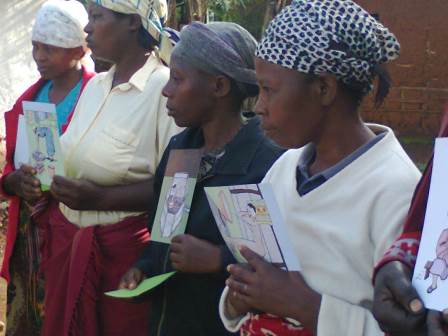Theoneste Ntakirutimana (MSc) presenting an independent study that had been done by the College of Medicine and Health Sciences, University of Rwanda, for WaterAid on their project in six sectors in Bugasera, between 2010-2013.
Click here to read the full paper: 2016-wateraid-cbehpp-effectiveness
‘Of course we saw great improvement,’ he said confidently, noting how malnutrition had been reduced and kitchen gardens started ‘within some time.’ He vouched for the existence of numerous ‘tontines’ (savings and buying groups) and sharing of skills, which were the common outcome of CHCs once they had finished the first six months of training. Of the 200 CHC studied he found 120 were implementing practices as recommended, whilst those who were not active, reported lack of time, negligence and lack of follow up by NGO as the reason. It was interesting that 90% of the CHC facilitators said they could easily understand the pictures and the tools. The 10% who did not find it easy said they could not do the ‘disease’ topics. This is understandable as this requires a stronger knowledge of the transmission cycle which is displayed before participants are asked to ‘Block the Route’ with other pictures. This finding reinforces our (Africa AHEAD’s) reservations about using ASOC as facilitators as they are not trained in health issues. Their recommendations were that Village Savings and Loans Associations are formed in CHCs to ensure ongoing activities take place which will sustain the usefulness of the CHC. They also strongly advised that the District feels that they own the programme.

